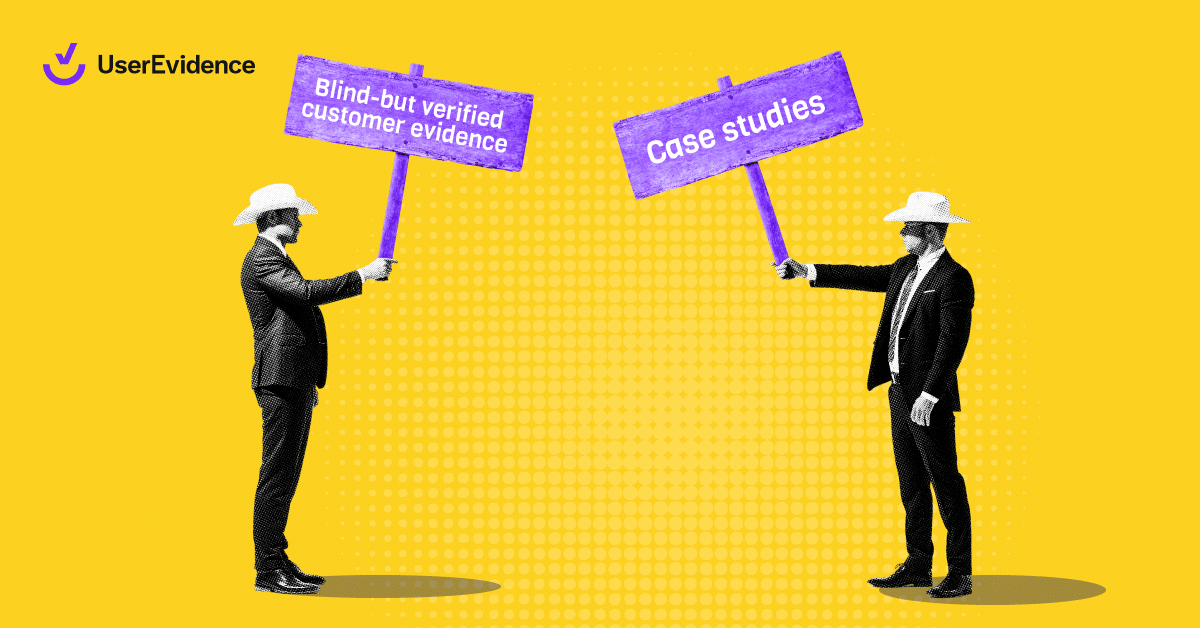TL;DR:
We surveyed 200+ customer marketing pros (and interviewed 8 top CMA leaders) for our 2025 Customer Marketing Technology Landscape Report. Beyond all the juicy data and user insights on 14 major vendors, one trend stood out loud and clear:
The customer marketing role is undergoing a massive shift.
It’s no longer just about creating case studies; It’s about driving revenue, owning the customer lifecycle, making AI your sidekick (not your replacement), and becoming a key connector across GTM teams.
If you’re still operating like it’s 2021, it’s time to level up. This blog breaks down exactly how the role is changing—and what you can do to stay ahead.
We just wrapped up creating the 2025 Customer Marketing Technology Landscape Report.
200+ CMA practitioners surveyed.
8 extended interviews with top-performing CMA professionals (with leaders at companies like Databricks, AlphaSense, Gong, Intellum, Freshworks, and Amplitude).
Hundreds of datapoints to dive into.
And, tons of insights left on the cutting room floor. (Hey, a 50+ page report is already pretty stacked! We were already pushing our goldfish brains!)
The biggest cutting-room-floor insight that warrants its own deep dive?
The seismic shift happening to the customer marketing role.
Customer marketing used to be a feel-good function. You’d spotlight a few happy customers, crank out some case studies, and maybe support the occasional reference request. Not anymore. What we heard was loud and clear:
The expectations, responsibilities, and influence of customer marketers are evolving fast. If you’re still operating like it’s 2021, you’re already behind.
Here are the biggest changes you should be feeling as a customer marketer in 2025–and, our best tips on how you can adapt.
Goodbye, case study factory…Hello, revenue driver
For a long time, customer marketing was measured by output: how many customer stories were published, how many quotes got pulled, how many reference calls got fulfilled. Today, that’s no longer enough. There’s an unmistakable push to tie every program back to revenue—and budget holders are watching closely.

In our survey, 36% of respondents expect their CMA budgets to increase in 2025, signaling confidence in the function. But here’s the catch: those increases are being granted based on proven ROI. That means customer marketers are expected to demonstrate how advocacy efforts accelerate pipeline, how references influence closed-won deals, and how customer content supports expansion and retention.
“It’s about real business impact—not just the number of assets created,” said Brittnee Dawson, Director of Customer Marketing at AlphaSense. Marketing leaders and CFOs alike are now asking: How do your programs move the needle? If you can’t answer that with clarity and data, you’ll have a harder time securing headcount, tech, or renewals.
How you can adapt
Stop thinking about case studies as one-off deliverables and start turning them into performance assets. Repurpose a single story across formats and functions—think proof points in sales decks, snackable quotes for social, and targeted snippets for buyer personas. Take a cue from brands like Mutiny and Clay that design their customer content with reuse in mind.
Lifecycle marketing is now your job, too
Customer marketing used to kick in once a customer was happy enough to participate in a story. But today, the role spans the entire post-sale lifecycle. You’re expected to engage customers early, often, and with precision.
That means mapping the journey, segmenting audiences, and showing up with the right message at the right time—whether that’s onboarding, adoption, renewal, or advocacy activation. It also means collaborating cross-functionally with CS, product, and revenue teams to identify where marketing can deliver value across stages.
“A big part of my job is helping customers succeed, not just as a feel-good effort but because their success directly impacts both my company’s and my own success,” shared Shannon Howard, Director of Customer and Content Marketing at Intellum. When customer marketers align their programs with customer success outcomes, it becomes easier to justify spend, demonstrate impact, and create advocates naturally.
How you can adapt
Start with a customer journey map and identify the moments where customer marketing can make an impact. Then build lightweight campaigns or proof assets around those key moments. As you scale proof, you’ll need a place to keep it: which is where a customer evidence library becomes a must for customer marketers who are adapting to lifecycle marketing strategies. Some of the best in the biz shared their tips in this blog post.
AI is reshaping the toolkit (but not replacing you)
AI has officially arrived in the CMA tech stack. Of the 14 vendors analyzed in our report, 12 now offer AI-powered capabilities. And these aren’t just flashy features—they’re solving real problems:
- Automating the identification and matching of advocates
- Generating and personalizing testimonial and case study content
- Delivering sentiment analysis for voice of customer insights
- Recommending relevant content for sales enablement
This shift is helping lean customer marketing teams scale their efforts without burning out. As one survey respondent put it, “We need AI-driven insights that go beyond vanity metrics. I want a tool that can show me exactly how advocacy efforts translate into sales outcomes.”
But here’s the nuance: AI isn’t replacing the role—it’s amplifying it. The best customer marketers aren’t just using AI tools—they’re evaluating them critically, piloting new workflows, and figuring out how to extract value without sacrificing authenticity.
How you can adapt
Challenge the technology vendors you work with on how they’re using AI within their tools to take manual tasks off of your plate. Ask them what their product roadmap with AI looks like. And, start to sharpen your own prompting skills and experiment more with the AI tools at your fingertips, like ChatGPT and Perplexity.
You’re no longer just a marketer. You’re a GTM team connector.
One of the biggest shifts we uncovered? Customer marketers are becoming strategic connectors across the business. They’re bridging the gaps between sales, CS, marketing, and product by championing the voice of the customer and delivering insights, stories, and references that drive decisions.
They’re also more deeply involved in tech stack decisions. Integration with CRM and data foundations is a top priority. Enterprise teams now average 10+ tools in their CMA stack, and mid-market teams average 6–8. With sprawl comes scrutiny, and customer marketers are often on the front lines of evaluating what to keep, cut, or consolidate.
“We’ve narrowed it down to three or four key areas—customer content, references, and advocacy,” said Aly McGue, Senior Customer Marketing Manager at Databricks. That kind of prioritization takes clarity, confidence, and a willingness to advocate internally for the right mix of tools and programs.
How you can adapt
Set up regular check-ins with sales and CS counterparts to share what’s working, gather gaps, and align on shared goals. (PS, we have worksheets for those conversations here). Build a simple internal roadmap that connects CMA activities to business outcomes across functions, then share it widely. And, finally, build a customer evidence program that gathers evidence that will be used by every function of your GTM org. The more relevant, scalable proof you can collect, curate, and share for your wider team–the more critical your seat becomes.
What this means for you
If you’re a customer marketer in 2025, here’s the reality:
You can’t afford to operate in a silo. You can’t just check the box on asset production. And you definitely can’t ignore the call to connect your work to revenue.
But you also have more power than ever. With the right tech, team, and cross-functional buy-in, you’re positioned to drive lasting impact across your organization.
So ask yourself:
- Are you measuring what matters?
- Are you involved in the full customer journey?
- Are your tools working with your systems, not against them?
- Are you building trust with vendors and internal stakeholders?
The role is changing. And that’s a good thing. Because the future of customer marketing isn’t just about stories — it’s about strategic, measurable influence.
And if you’re ready to own that? You’re already ahead of the curve.
For more findings from our survey of 200+ customer marketing and advocacy professionals, check out the 2025 Customer Marketing Technology Landscape report. And to see how UserEvidence is helping the best customer marketers connect their GTM teams to high-value customer proof at their fingertips, check out the power of our platform at our Interactive Demo Ranch.



